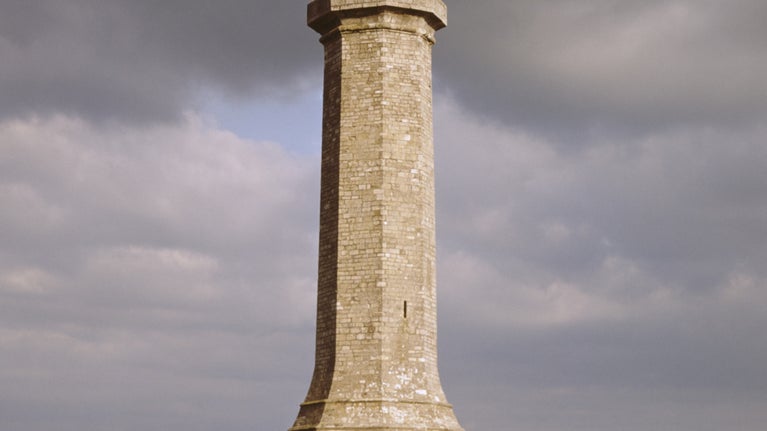
Donate
Everyone needs nature, now more than ever. Donate today and you could help people and nature to thrive at the places we care for.

*Please note, the cows are not currently grazing this land* Belted Galloway cows have been helping us restore and conserve the heathland covering the top of the hill at the Hardy Monument over the last few years. Find out exactly how their grazing benefits the heathland, and why the breed is so well suited to the task.
*please note the cows are not currently grazing this land*
Regular visitors to the hilltop at the Hardy Monument will have noticed the significant changes and work that has been taking place in recent years.
The installation of fencing, cattle grids and water supplies, and the removal of the pine plantations, have all contributed towards the restoration and conservation of the heath covering the top of the hill.
The work has also included the management of existing areas of heath to rejuvenate old heather, bilberry and gorse, and create variety in age, height and density of the shrubs. Traditionally this would have been done by cutting or burning areas of older heath in a regular cycle.
For the last few years however, cattle have been helping us by grazing the heathland at the Hardy Monument.
The Belted Galloways are a native breed of cow well adapted to cope with the harsh conditions that can be found at the site. They are small and compact, with a low centre of gravity, which means that they can navigate the steeper slopes while causing little ground damage with their relatively large hooves.

The Galloways also have a proportionally large chest and stomach, enabling them to digest and survive on the lower-nutrient food provided by the heathland vegetation.
The cattle grazing has several benefits for the heathland, the most useful of which perhaps is the creating of variety in the height, age and density of the vegetation. A wider range of habitats and microclimates becomes available for the flowers, insects, mammals, reptiles and birds that make their home here, as the cattle move around the site and eat.
This movement also has the added benefit of breaking up and crushing the bracken stands which have become well established over most of the hilltop. While the bracken has some value for some species, it can shade out much of the native flora when the growth becomes very thick.
So for this reason, as well as grazing, we have been carrying out bracken control measures over the last couple of years. The break-up and reduction of the dense bracken will allow new heather, bilberry and other seedlings to germinate from the seed reserves newly exposed to the light.
With your ongoing support, we're able to continue our vital conservation work. Thank you for helping to protect these special places.

Everyone needs nature, now more than ever. Donate today and you could help people and nature to thrive at the places we care for.
We believe that nature, beauty and history are for everyone. That’s why we’re supporting wildlife, protecting historic sites and more. Find out about our work.

Read about our strategy, which focuses on restoring nature, ending unequal access and inspiring more people.
